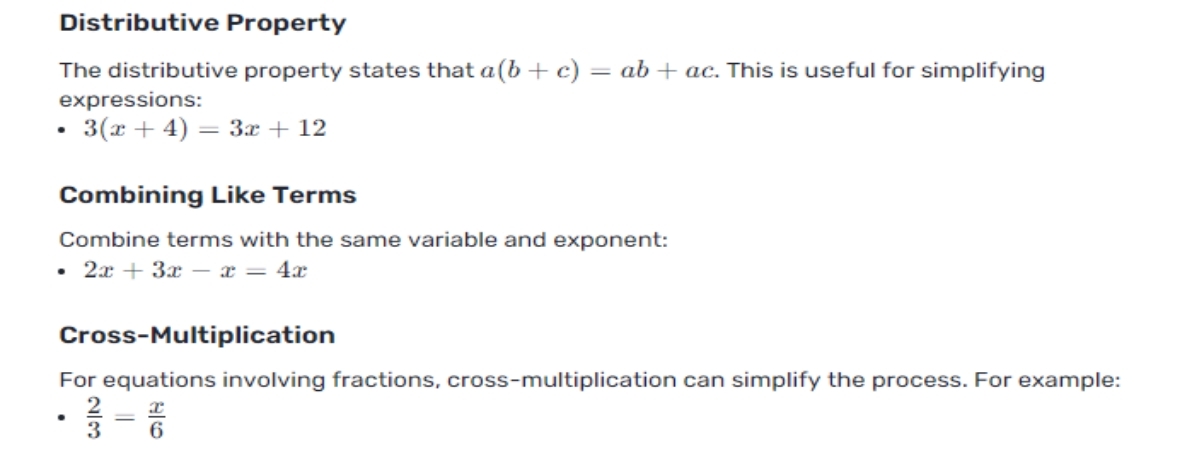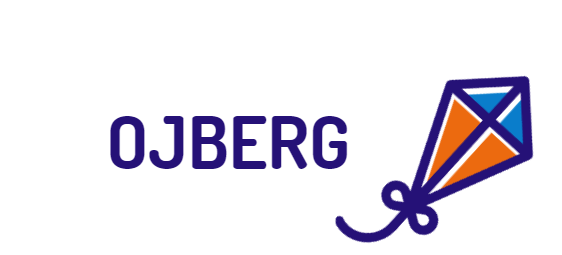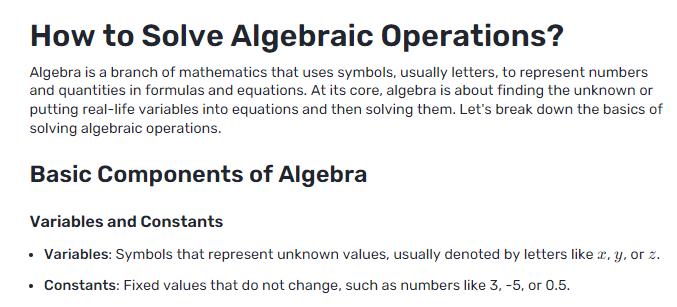Mathematical tasks can frequently be threatening for understudies because of the perplexing operations and rules included. Be that as it may, by understanding the crucial standards and techniques for streamlining and controlling arithmetical operations, handling these numerical undertakings can turn out to be substantially more sensible.
In this article, we will investigate different procedures and devices that can assist with smoothing out the most common way of addressing arithmetical operations, making it more straightforward to actually understand and apply these ideas. From working on operations to settling operations, Algebraic Operations require a strong comprehension of the standards and properties that oversee these numerical cycles.
Simplifying Algebraic Operations and Effectively
Polynomial math is a major part of math that arrangements with images and the standards for controlling these images to tackle operations and improve on operations. To actually work with arithmetical operations, it is essential to comprehend how they can be streamlined and controlled effectively.
Utilize the Request for Operations
One of the vital standards in variable-based math is the request for tasks. This standard expresses that specific tasks should be performed before others show up at the right arrangement. The request for tasks is typically recalled by the abbreviation PEMDAS, which represents Brackets, Examples, Increase and Division, and Expansion and Deduction (from left to right). By following this request, you can guarantee that you are streamlining and controlling arithmetical operations accurately.
Consolidate Like Terms
One more significant strategy in working on logarithmic operations is to join like terms. Like terms will be terms that have similar factors raised to similar abilities. By combining these terms, you can reduce the amount of terms in a verbalization and simplify it to work with.
Disseminate and Factor
Dispersing and considering are two fundamental abilities in controlling logarithmic operations. At the point when you circulate, you increase a term outside enclosures by each term inside the brackets. For instance, in the event that you have the articulation 2(x + 3), you would appropriate the 2 to get 2x + 6. Calculating, then again, includes separating an articulation into factors.
Settle Operations Bit by Bit
While addressing logarithmic operations, it is critical to purposefully handle each step. Begin by improving on the two sides of the situation utilizing the methods referenced previously. Then, disengage the variable by performing opposite operations. For instance, on the off chance that you have the condition 2x + 3 = 7, you would initially deduct 3 from the two sides to get 2x = 4, and afterwards, partition by 2 to settle for x.
Moves Toward Using Gauth for Tackling Questions
With regards to rearranging and controlling mathematical tasks successfully, one of the key apparatuses that can be used is Gauth. Gauth is an amazing asset that permits clients to include mathematical questions, look for results, and, surprisingly, recover or duplicate the answers for additional examination.
Step 1: Enter your Question
The most vital phase in utilizing Gauth successfully is to enter your mathematical question. This can be anything from a basic condition to a more mind-boggling mathematical articulation. By entering your inquiry into Gauth, the instrument can investigate the information and furnish you with a bunch of results in light of the logarithmic tasks that should be performed.
Step 2: Get the Outcome
Whenever you have entered your inquiry, Gauth will then furnish you with the consequences of the arithmetical operations. This can incorporate rearrangements, factorizations, or even answers for operations. Via cautiously breaking down the outcomes given by Gauth, you can acquire a more profound comprehension of the logarithmic tasks at play and how they can be controlled to accomplish the ideal result.

Step 3: Copy or Regenerate
Now and again, you might have to copy or regenerate the outcomes given by Gauth for additional investigation. This should be possible effectively inside the instrument, permitting you to return to the outcomes sometime in the not-too-distant future or even control them further to investigate various potential outcomes.
Final Wording
Arithmetical operations can be improved and controlled actually by observing specific guidelines and systems. By grasping the properties of operations, for example, commutative, cooperative, and distributive properties, and rehearsing with different mathematical issues, people can work on their abilities to disentangle and control logarithmic operations.


